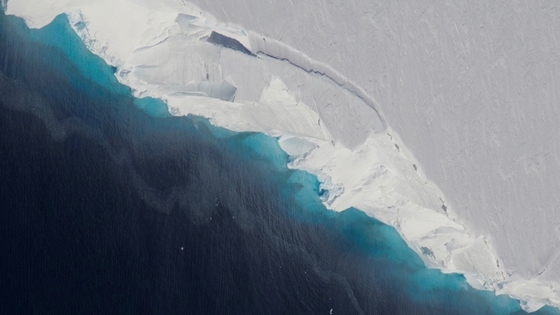[{“available”:true,”c_guid”:”8d3fc360-c647-458f-8b94-79fd00c6b587″,”c_author”:”MTI/hvg.hu”,”category”:”elet”,”description”:”A helyi hatóságok misszionáriusokat kértek fel, hogy közvetítsenek az ügyben.”,”shortLead”:”A helyi hatóságok misszionáriusokat kértek fel, hogy közvetítsenek az ügyben.”,”id”:”20230220_papua_uj_guinea_tuszejtes”,”image”:”https://api.hvg.hu/Img/ffdb5e3a-e632-4abc-b367-3d9b3bb5573b/8d3fc360-c647-458f-8b94-79fd00c6b587.jpg”,”index”:0,”item”:”4740eef9-47b6-485e-88f0-17c13c66c160″,”keywords”:null,”link”:”/elet/20230220_papua_uj_guinea_tuszejtes”,”timestamp”:”2023. február. 20. 08:08″,”title”:”Egy tanárt és hallgatóit is túszul ejtették Pápua Új-Guineában”,”trackingCode”:”RELATED”,”c_isbrandchannel”:false,”c_isbrandcontent”:false,”c_isbrandstory”:false,”c_isbrandcontentorbrandstory”:false,”c_isbranded”:false,”c_ishvg360article”:false,”c_partnername”:null,”c_partnerlogo”:”00000000-0000-0000-0000-000000000000″,”c_partnertag”:null},{“available”:true,”c_guid”:”f616b7d6-c150-47fc-aa6c-8e0a1c0fc745″,”c_author”:”hvg.hu”,”category”:”elet”,”description”:”A hatóságok egyelőre nem közölték, hogy Nicola Bulley holttestét találták-e meg.”,”shortLead”:”A hatóságok egyelőre nem közölték, hogy Nicola Bulley holttestét találták-e meg.”,”id”:”20230220_brit_rendorseg_nicola_bulley_holttest_folyo”,”image”:”https://api.hvg.hu/Img/ffdb5e3a-e632-4abc-b367-3d9b3bb5573b/f616b7d6-c150-47fc-aa6c-8e0a1c0fc745.jpg”,”index”:0,”item”:”967c0491-e52e-4e7f-a03e-7b902a383c2c”,”keywords”:null,”link”:”/elet/20230220_brit_rendorseg_nicola_bulley_holttest_folyo”,”timestamp”:”2023. február. 20. 05:55″,”title”:”Holttestet találtak a brit rendőrök ott, ahol néhány hete egy kétgyermekes anya eltűnt”,”trackingCode”:”RELATED”,”c_isbrandchannel”:false,”c_isbrandcontent”:false,”c_isbrandstory”:false,”c_isbrandcontentorbrandstory”:false,”c_isbranded”:false,”c_ishvg360article”:false,”c_partnername”:null,”c_partnerlogo”:”00000000-0000-0000-0000-000000000000″,”c_partnertag”:null},{“available”:true,”c_guid”:”a1f6f66e-6eda-4278-8bfb-65d11255fd62″,”c_author”:”hvg.hu”,”category”:”vilag”,”description”:”Elindult hétvégi podcastunk, az Elvitelre, amelyben az adott hét legjobb HVG hetilapos és hvg360-as anyagaiból válogatunk – csak indítsa el a podcastot a háttérben és hallgassa meg szerzőink legjobb írásait! Az e heti menü: A földrengés utórengései és Hitler magyar szemmel.”,”shortLead”:”Elindult hétvégi podcastunk, az Elvitelre, amelyben az adott hét legjobb HVG hetilapos és hvg360-as anyagaiból…”,”id”:”20230216_Hoztunk_ket_cikket_a_HVG_hetilapbol_elvitelre_hallgassa_meg”,”image”:”https://api.hvg.hu/Img/ffdb5e3a-e632-4abc-b367-3d9b3bb5573b/a1f6f66e-6eda-4278-8bfb-65d11255fd62.jpg”,”index”:0,”item”:”c57d75ce-f884-4c6a-8ac3-a75b5b2b54b2″,”keywords”:null,”link”:”/vilag/20230216_Hoztunk_ket_cikket_a_HVG_hetilapbol_elvitelre_hallgassa_meg”,”timestamp”:”2023. február. 19. 06:00″,”title”:”Hoztunk két cikket a HVG hetilapból elvitelre, hallgassa meg!”,”trackingCode”:”RELATED”,”c_isbrandchannel”:false,”c_isbrandcontent”:false,”c_isbrandstory”:false,”c_isbrandcontentorbrandstory”:false,”c_isbranded”:false,”c_ishvg360article”:false,”c_partnername”:null,”c_partnerlogo”:”00000000-0000-0000-0000-000000000000″,”c_partnertag”:null},{“available”:true,”c_guid”:”f6332fa1-f45d-4c0a-9aa4-3e6c878bc70e”,”c_author”:”MTI”,”category”:”gazdasag”,”description”:”A fő témák egyike Magyarország és Kína stratégiai együttműködése lesz.”,”shortLead”:”A fő témák egyike Magyarország és Kína stratégiai együttműködése lesz.”,”id”:”20230219_szijjaro_peter_vang_ji_kina_kulugyminiszter_targyalas”,”image”:”https://api.hvg.hu/Img/ffdb5e3a-e632-4abc-b367-3d9b3bb5573b/f6332fa1-f45d-4c0a-9aa4-3e6c878bc70e.jpg”,”index”:0,”item”:”3656f281-e216-4ce9-ae5d-850b5ad08319″,”keywords”:null,”link”:”/gazdasag/20230219_szijjaro_peter_vang_ji_kina_kulugyminiszter_targyalas”,”timestamp”:”2023. február. 19. 09:07″,”title”:”Szijjártóval tárgyalni jön a kínai fődiplomata”,”trackingCode”:”RELATED”,”c_isbrandchannel”:false,”c_isbrandcontent”:false,”c_isbrandstory”:false,”c_isbrandcontentorbrandstory”:false,”c_isbranded”:false,”c_ishvg360article”:false,”c_partnername”:null,”c_partnerlogo”:”00000000-0000-0000-0000-000000000000″,”c_partnertag”:null},{“available”:true,”c_guid”:”92e0fa77-9d6f-4305-944a-4ed4397ddb1d”,”c_author”:”Horeczky Krisztina”,”category”:”360″,”description”:”Hernán Díaz új regénye, a Bizalom játékos, trükkös és elmés opusz. Remek, intellektuálisan felvillanyozó írás.”,”shortLead”:”Hernán Díaz új regénye, a Bizalom játékos, trükkös és elmés opusz. Remek, intellektuálisan felvillanyozó írás.”,”id”:”202307_konyv__negyfele_megkozelites_hernan_diaz_bizalom”,”image”:”https://api.hvg.hu/Img/ffdb5e3a-e632-4abc-b367-3d9b3bb5573b/92e0fa77-9d6f-4305-944a-4ed4397ddb1d.jpg”,”index”:0,”item”:”9a89ac45-8840-4870-9143-03660a1f8f06″,”keywords”:null,”link”:”/360/202307_konyv__negyfele_megkozelites_hernan_diaz_bizalom”,”timestamp”:”2023. február. 20. 11:00″,”title”:”\”Amikor reggel felkelünk, a pihenést elcseréljük a haszonra\” – irodalmi kaland Hernán Díaz új regénye “,”trackingCode”:”RELATED”,”c_isbrandchannel”:false,”c_isbrandcontent”:false,”c_isbrandstory”:false,”c_isbrandcontentorbrandstory”:false,”c_isbranded”:false,”c_ishvg360article”:true,”c_partnername”:null,”c_partnerlogo”:”00000000-0000-0000-0000-000000000000″,”c_partnertag”:null},{“available”:true,”c_guid”:”04cfe914-d007-4578-a1d1-a6776edf52e2″,”c_author”:”Vass Péter”,”category”:”360″,”description”:”A mozgóképes műfajra gyakorolt hatását Federico Fellini és Jean-Luc Godard mellett emlegetik.”,”shortLead”:”A mozgóképes műfajra gyakorolt hatását Federico Fellini és Jean-Luc Godard mellett emlegetik.”,”id”:”202307_meghalt_carlos_saura__azutolso_spanyol_grand”,”image”:”https://api.hvg.hu/Img/ffdb5e3a-e632-4abc-b367-3d9b3bb5573b/04cfe914-d007-4578-a1d1-a6776edf52e2.jpg”,”index”:0,”item”:”d4e49113-8515-4b3b-b385-26d247494063″,”keywords”:null,”link”:”/360/202307_meghalt_carlos_saura__azutolso_spanyol_grand”,”timestamp”:”2023. február. 19. 08:30″,”title”:”A filmművészet legnagyobbjai közé tartozott a nemrég elhunyt Carlos Saura, az utolsó spanyol grand “,”trackingCode”:”RELATED”,”c_isbrandchannel”:false,”c_isbrandcontent”:false,”c_isbrandstory”:false,”c_isbrandcontentorbrandstory”:false,”c_isbranded”:false,”c_ishvg360article”:true,”c_partnername”:null,”c_partnerlogo”:”00000000-0000-0000-0000-000000000000″,”c_partnertag”:null},{“available”:true,”c_guid”:”55d3f097-5180-479f-ae0c-6a2017ce4e2e”,”c_author”:”hvg.hu”,”category”:”itthon”,”description”:”Az ittas olasz sofőr kis híján további két fiatalt is elütött.”,”shortLead”:”Az ittas olasz sofőr kis híján további két fiatalt is elütött.”,”id”:”20230220_Nagykoruti_villamosmegallo_gazolas_baleset_46os_Harminckettesek_tere_biztonsagi_kamera_felvetele”,”image”:”https://api.hvg.hu/Img/ffdb5e3a-e632-4abc-b367-3d9b3bb5573b/55d3f097-5180-479f-ae0c-6a2017ce4e2e.jpg”,”index”:0,”item”:”8c0f6edd-92b9-41ba-8b03-9a2de891eb17″,”keywords”:null,”link”:”/itthon/20230220_Nagykoruti_villamosmegallo_gazolas_baleset_46os_Harminckettesek_tere_biztonsagi_kamera_felvetele”,”timestamp”:”2023. február. 20. 07:30″,”title”:”Csak centiken múlt két fiatal élete a villamosmegállóban történt gázoláskor”,”trackingCode”:”RELATED”,”c_isbrandchannel”:false,”c_isbrandcontent”:false,”c_isbrandstory”:false,”c_isbrandcontentorbrandstory”:false,”c_isbranded”:false,”c_ishvg360article”:false,”c_partnername”:null,”c_partnerlogo”:”00000000-0000-0000-0000-000000000000″,”c_partnertag”:null},{“available”:true,”c_guid”:”5e6f5fd9-6a58-4d6b-ae3b-8fb7be8d0979″,”c_author”:”HVG360″,”category”:”360″,”description”:”Sorozatunkhoz öt írót kértünk fel: öt kulcsszót felhasználva írjanak arról, miként élték meg az elmúlt hetet. Karafiáth Orsolyának most ebből a készletből kellett ihletet merítenie: évértékelő, vezetőszár, Tiborcz’s, szélsőbaljobb, dísztag.”,”shortLead”:”Sorozatunkhoz öt írót kértünk fel: öt kulcsszót felhasználva írjanak arról, miként élték meg az elmúlt hetet. Karafiáth…”,”id”:”20230219_Az_en_hetem_Karafiath_Orsolya”,”image”:”https://api.hvg.hu/Img/ffdb5e3a-e632-4abc-b367-3d9b3bb5573b/5e6f5fd9-6a58-4d6b-ae3b-8fb7be8d0979.jpg”,”index”:0,”item”:”e7662ed4-8f65-4146-ae5e-438f12804cab”,”keywords”:null,”link”:”/360/20230219_Az_en_hetem_Karafiath_Orsolya”,”timestamp”:”2023. február. 19. 19:57″,”title”:”Az én hetem: Közeleg a háború első évfordulója, Karafiáth Orsolya igazi békére vágyik”,”trackingCode”:”RELATED”,”c_isbrandchannel”:false,”c_isbrandcontent”:false,”c_isbrandstory”:false,”c_isbrandcontentorbrandstory”:false,”c_isbranded”:false,”c_ishvg360article”:true,”c_partnername”:null,”c_partnerlogo”:”00000000-0000-0000-0000-000000000000″,”c_partnertag”:null}]


Order the weekly HVG newspaper or digitally and read us anywhere, anytime!
That’s why we ask you, our readers, to support us! We promise to keep doing the best we can!
We recommend it from the first page













































